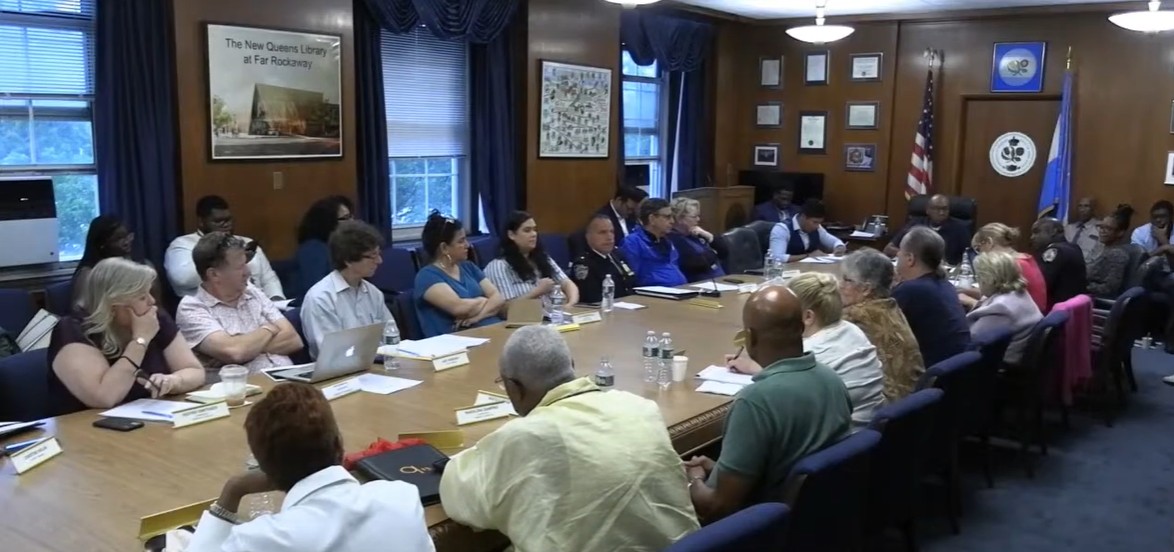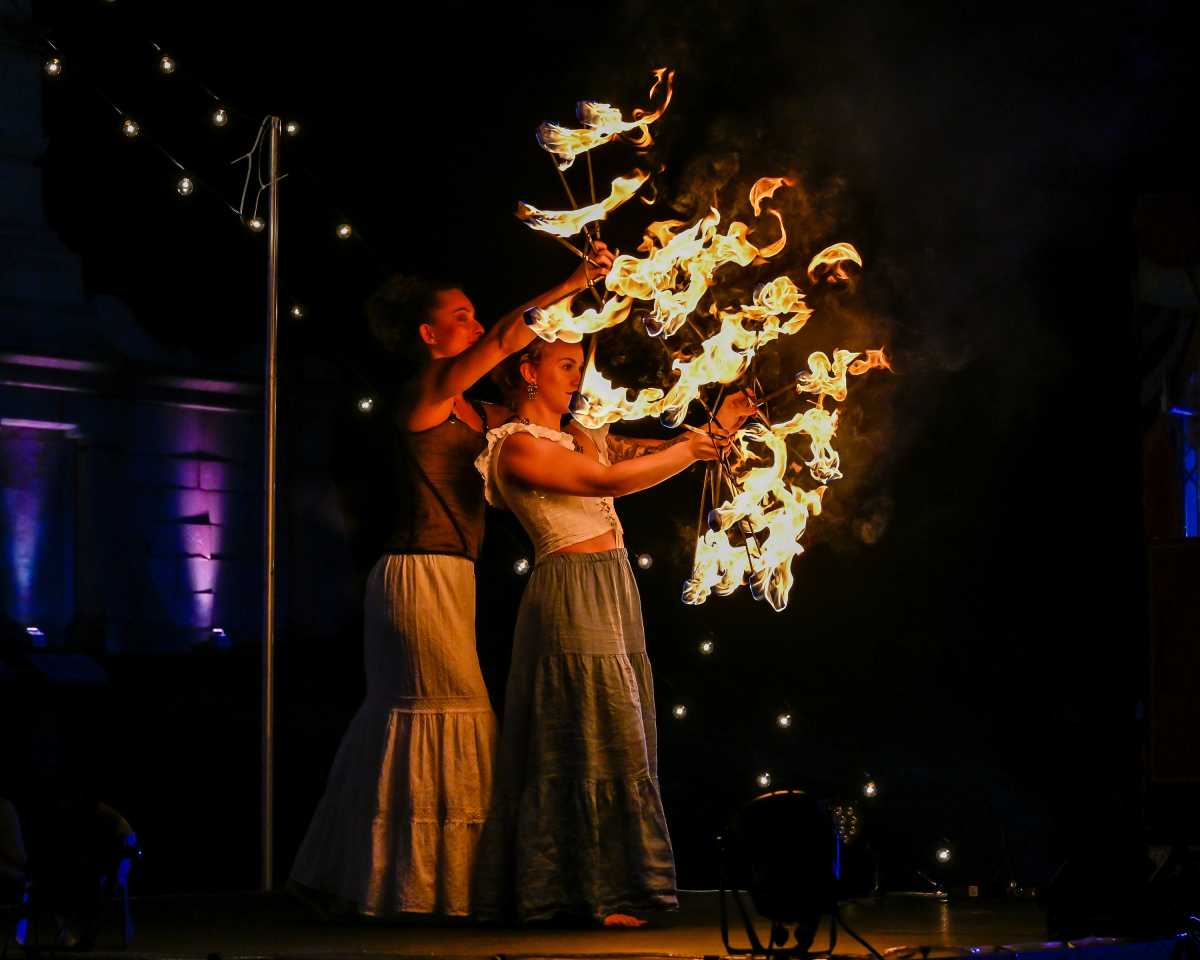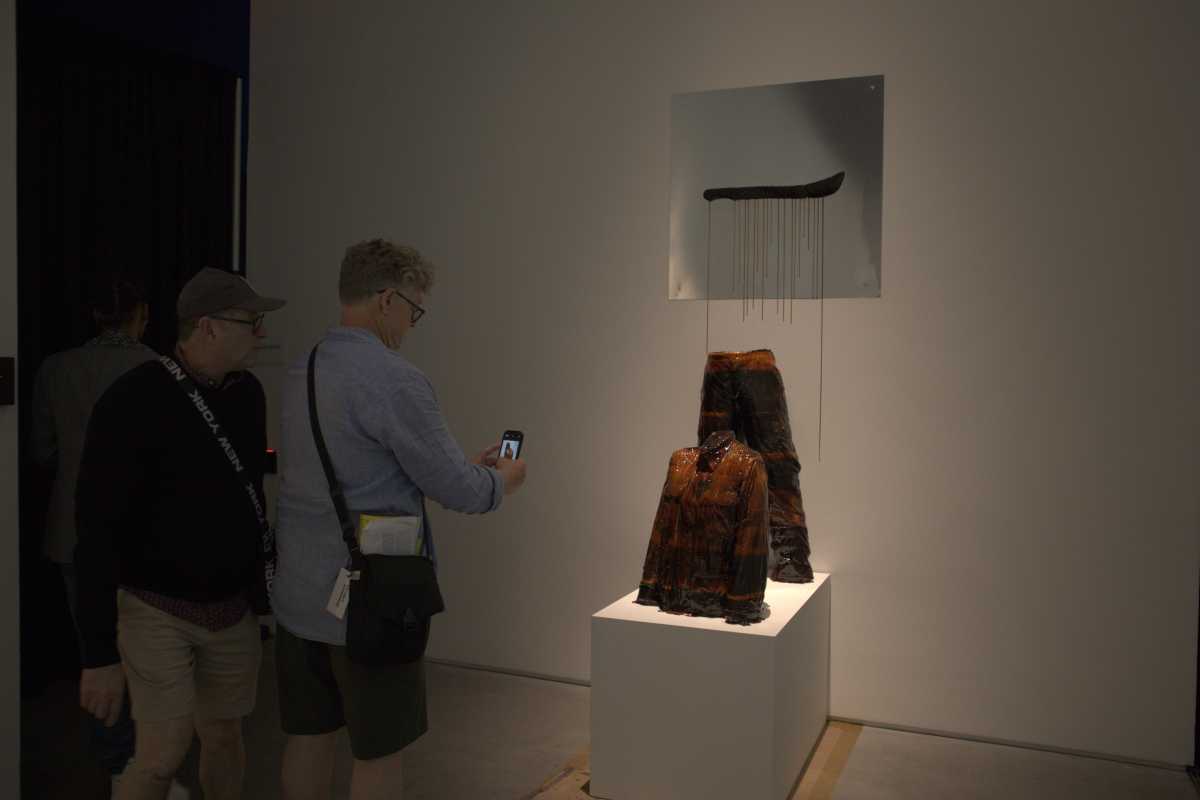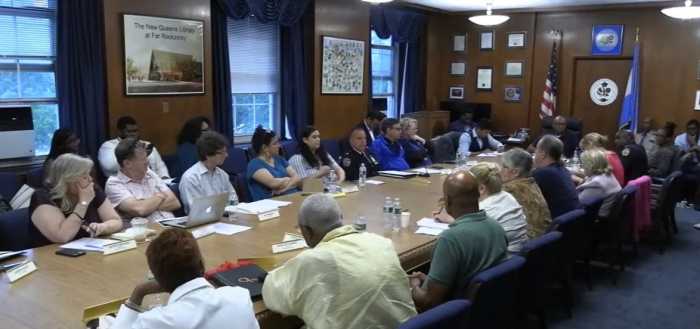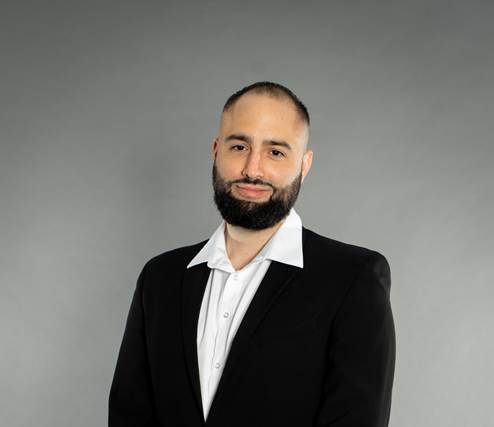Two groups advocating for women gathered in the City Hall Rotunda on Monday, demanding that the Big Apple finally find an equal “paying” field.
On March 24, CWA Local 1180 and PowHerNY assembled to call for the administration to amend and close loopholes in current laws that allow businesses to pay women less than their male counterparts. The rally was held in conjunction with Equal Pay Day, which symbolizes how far into the current year women must work to earn what men earned in the previous year.
“Last year, out there on the steps of City Hall, and a little bit sunnier of a day, we came together to acknowledge the continuing wage gap for women, especially women of color, and we celebrated New York’s leadership in breaking down wage and equity with laws like the salary history ban and the salary range law,” said Rebecca Damon, Chief Labor Policy Officer and New York Executive Director for SAG-AFTRA. “We called for the passage of the New York State Equal Rights Amendment, which passed by overwhelming support; that’s how much we would need the era to protect our rights in 2025. It’s critical that New York’s laws could be a shield for workers. For New York, these plans fall for action, not silence.”
Introduced by Majority Leader Amanda Farías, Intro 984 requires that employers with 100+ employees perform annual pay equity studies and identify and address wage disparities. The legislation works in tandem with Intro 982, co-primed by Council Member Tiffany Cabán, ensuring transparency through mandatory pay data reporting.
“Equal pay is not just a women’s issue — it’s an economic necessity. Women in New York earn only 87 cents for every dollar a man makes, costing them millions over a lifetime—money that should be building homes, funding education, and securing financial stability. New York must lead the fight for economic justice, and we will not stop until equal pay is a reality for all,” said Farías.


CWA Local 1180 representative Glorida Middleton noted that women often face discrimination in hiring and promotion even in the most essential jobs. That leads to less advancement and higher pay.
“For years, we have known that women typically earn less than their white male counterparts doing substantially similar work,” Middleton said. “We have fought to make women’s salaries equal. We have worked with city and state legislators to pass legislation preventing unequal pay based on gender, race or religion, and we have been the leading, outspoken New York City labor union to continually send the message that salaries should be based predominantly on education and experience.”
Data shows that in New York, working women earn 87 cents on the dollar compared to men in the exact same position. The disparities in pay are even wider for women of color. Black women reportedly lose out on 1.1 million dollars, and Latina women lose out on 1.4 million dollars.
Some major factors behind this are pay secrecy, which allows pay to go unrealized; occupational segregation; the motherhood penalty; and unpaid caregiving repressibilities.
POWHerNY and Local 1180 are both attempting to change that, hoping that this rally will be the last, ensuring that the wage gap gets closed. This is the 19th consecutive year for the Equal Pay Day rally.


“Today was the day when women’s earnings catch up to what men earned last year. In other words, women had to work an extra two months, three weeks and a couple of days to earn what men earned in 12 months,” said Robin Blair-Batte of CWA Local 1180. “Women, on average, earn less than men for the same work, and it takes us this long into the new year to close the wage gap. While we’ve made progress, the truth is that the gender pay gap still exists across every industry, every state and every level of employment. This disparity affects women across race, ethnicity and age.”
City Council Speaker Adrienne Adams pointed out that the legislative body has worked to “address the gender and racial wage gap,” including boosting the city’s salary range disclosure law.
“Last year, the council released its paid disparity report. What an eye-opener that was. It told us some things we knew and told us some things that we didn’t want to know. It found these persistent gaps in the municipal workforce are largely the result of women of color being paid less,” said Adams. “As a council, we will continue to find creative and meaningful ways to address pay disparities in the city, especially at a time when our lives and opportunities as women are under attack by the federal government.”













